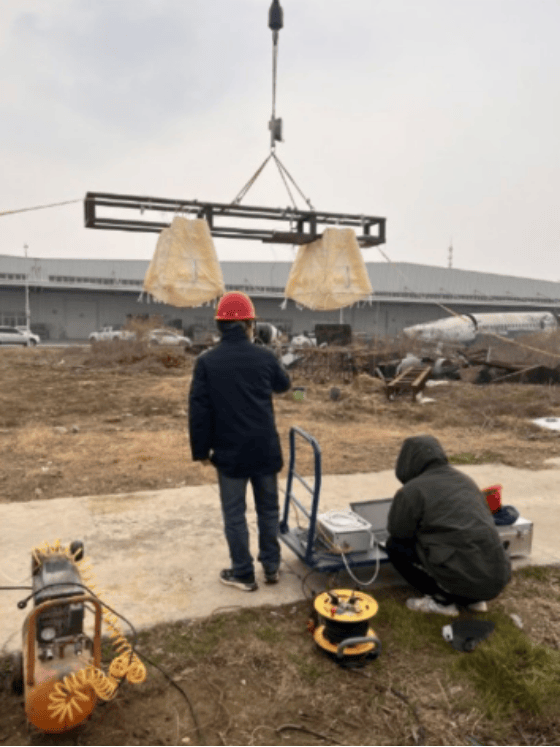Aircraft Airbag Drop Impact Test for Shock Performance
February 2024
Test Objective
To evaluate the shock absorption performance of inflatable airbags during controlled drop tests using a multi-channel dynamic measurement system.
Test Setup
1. Measurement System:
Primary equipment: 8-channel DE-944 Dynamic Signal Test and Analysis System
Sensor configuration:
3 high-G accelerometers (mounted on front/middle/rear positions of steel frame)
Synchronized high-speed camera (1000fps) for motion tracking
2. Test Article:
Prototype aircraft landing gear airbag system
Multiple pressure configurations (50-150psi in 25psi increments)
3. Test Platform:
5m vertical drop tower with guided rails
500kg simulated aircraft mass
Test Procedure
1. Instrumented the steel impact frame with triaxial accelerometers
2. Conducted sequential drops from 3m height for each pressure variant
3. Acquired 8 channels of acceleration data at 20kHz sampling rate
4. Performed 5 repeat tests per configuration for statistical significance
Key Parameters Analyzed
Peak deceleration (G) at each measurement point
Pulse duration (ms) of impact event
Energy absorption efficiency
Pressure-to-performance correlation
Preliminary Findings
Optimal performance observed at 100psi configuration:
62% reduction in peak G-load compared to rigid impact
35% longer pulse duration than lowest pressure setting
Front frame location showed 15% higher peak acceleration than rear
Nonlinear stiffness characteristics observed above 125psi
Engineering Significance
Validated airbag design meets MIL-STD-810G requirements for emergency landing
Identified pressure tuning range for operational deployment
Demonstrated measurement system capability for transient impact events
Conclusion
The controlled drop impact tests demonstrated that inflatable aircraft airbags play a critical role in mitigating landing shock loads during emergency scenarios. By systematically analyzing pressure configurations, the study identified an optimal range—particularly around 100 psi—that delivered the best balance of energy absorption and structural protection. This configuration reduced peak G-forces by over 60% compared to rigid impacts, while also extending pulse duration for smoother deceleration. The observed nonlinear stiffness at higher pressures highlights the importance of precise tuning to avoid diminishing returns.
These results not only validate compliance with MIL-STD-810G but also provide valuable insights for future design optimization and operational guidelines. The data gathered will serve as a foundation for advanced CFD simulations, full-scale integration, and environmental condition testing. Ultimately, this research reinforces the viability of airbag systems as a cost-effective, lightweight solution for enhancing passenger safety and structural integrity in modern aircraft design.

